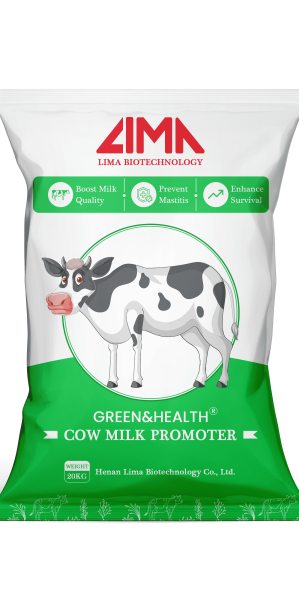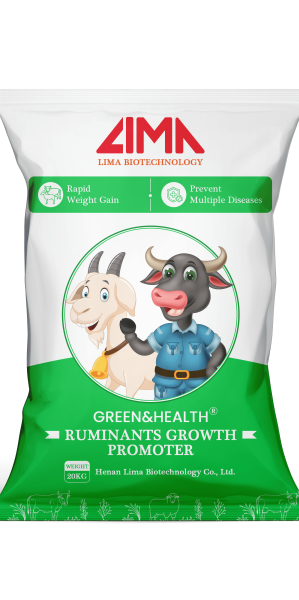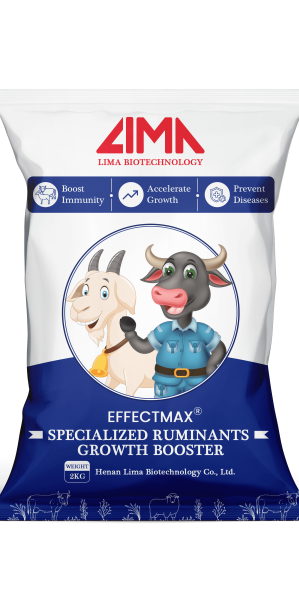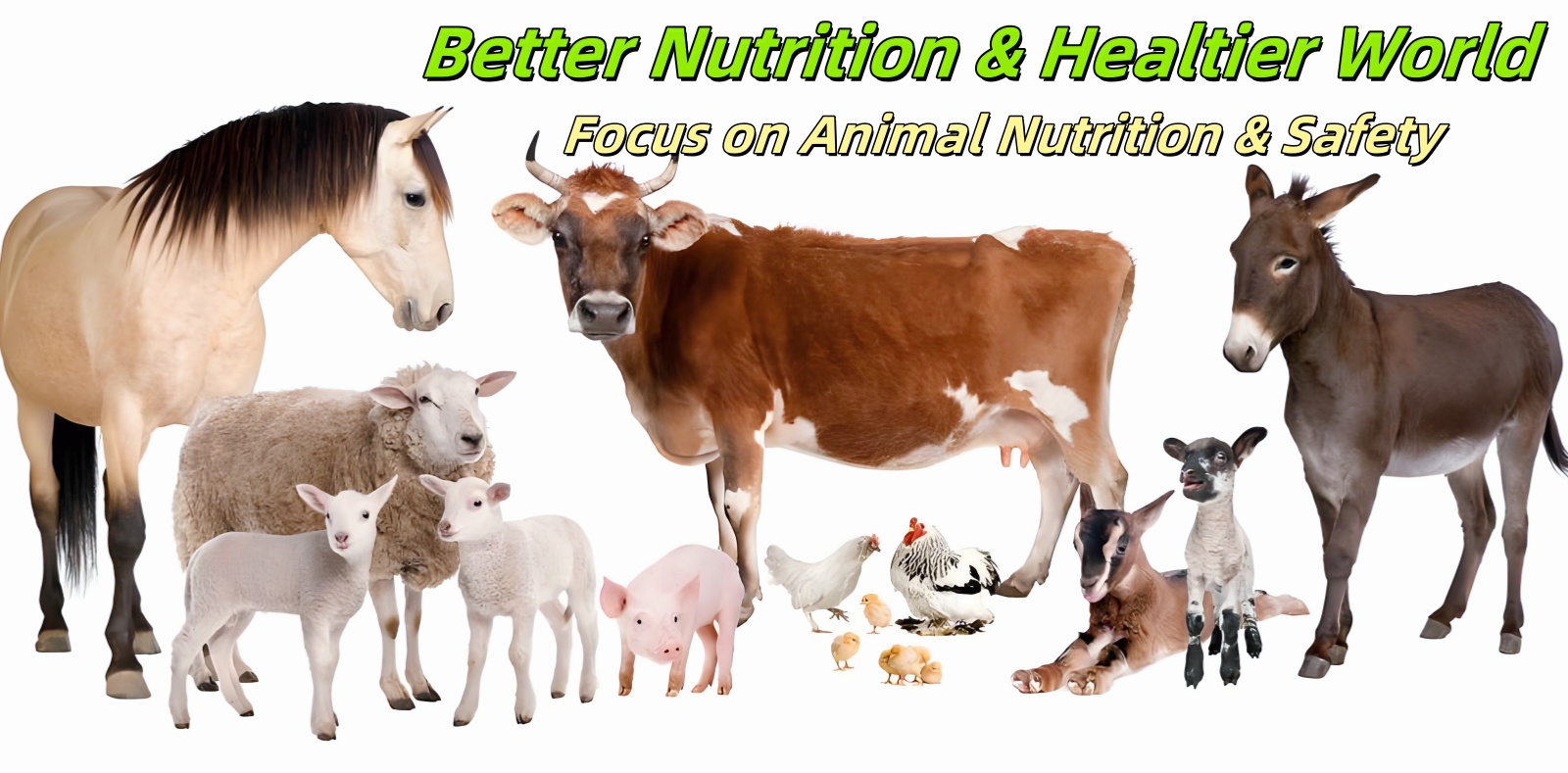In Kenya, dairy farming is an important part of the agricultural economy, not only meeting the domestic demand for dairy products but also providing a stable source of income for farmers. However, many farmers face problems such as low milk production, high feed costs, and frequent diseases that make farming ineffective. In fact, through scientific breed selection, nutritional management, environmental control and health management measures, combined with high-quality dairy cattle production enhancers, milk production and farm efficiency can be significantly improved.
Selecting high yielding dairy breeds
Breed is one of the central determinants of milk production in dairy cows. There are significant differences between breeds in terms of milk yield, feed conversion and adaptability. Considering the diverse climatic conditions in Kenya, selecting breeds with high adaptability and potential to produce high yields can reduce the difficulty of farming at the source.
Holstein and Juanxan cows are high yielding breeds adapted to the Kenyan climate. Holstein cows are known for their high milk production. These cows are highly resilient to changes in the environment and in combination with dairy production enhancers can maintain consistent milk production. However, in order to maintain their high performance, they need to be well ventilated and shaded in hot environments to minimise the effects of heat stress; Jersey cows, although slightly lower in milk production than Holsteins, can also produce better milk through the use of milk growth promoters. They produce milk with a higher fat content, which makes them more suitable for cream and other high quality dairy products. The smaller size and better digestion of roughage makes them ideal for small farmers with limited resources. Not only do jersey cows stay healthy with limited resources, but they also provide a higher economic return for farmers.
High-yielding dairy breeds can also be bred by crossing imported breeds with local cattle breeds to produce new breeds better suited to Kenya's specific environmental conditions. These crossbred cows inherit the high yielding characteristics of the imported breeds while retaining the disease tolerance and resilience to harsh environments of the local breeds. Whilst their milk production may be slightly lower than purebred Holsteins or Juanzan cows, the combination of scientific use of cow enrichment can increase milk production whilst ensuring that the cows are healthy in Kenya's climate and farming conditions. However, it is a very practical option for regions that face extreme weather conditions or feed shortage problems.
When choosing high yielding cows, it is always important to note that regardless of the breed chosen, young animals should be purchased from reputable breeding farms to avoid introducing weak animals that carry diseases. Calves from reliable sources are not only in better health, but usually provide a certificate of breed purity, ensuring that the cow's maximum growth potential is not compromised. It is also crucial to take into account local climatic conditions, feed resources and specific farming needs when introducing new breeds. This will not only maximise the advantages of the breed, but also improve the overall farming efficiency. With careful selection and management strategies, you can find the breed that best suits your farm's specific situation and significantly increase milk production for Lima Biotech Cow Milk Booster.
Optimising nutritional supply
In order to increase milk production of dairy cows, scientific and rational feed management is crucial. By carefully designing feed formulations and using high-quality yield enhancers, the performance of cows can be effectively enhanced. Products such as milk enhancers can build on this foundation to further increase milk production.
The scientific mix of feed ingredients is key to cow health and milk production. A cow's diet needs to contain sufficient energy, protein, vitamins and minerals to meet the dual demands of growth and development and dairy production. Energy is a fundamental and critical component of a cow's diet. In addition to traditional energy sources such as corn silage and oats, consider introducing other carbohydrate-rich feeds such as sorghum, barley and other grains. Protein is an important ingredient in the synthesis of milk protein in dairy cows and therefore adequate supply must be ensured in the diet. Leguminous pasture grasses and soya bean cake are good quality sources of protein, but other protein-rich feeds such as cottonseed meal and rapeseed meal can also be considered. These feeds not only have a high protein content, but also have a more balanced amino acid composition, which helps cows absorb and utilise them better. In addition, adding Lima Biotech Cow milk enhancers to the feed will help the cows absorb the nutrients better and increase milk production. These milk enhancers are usually rich in amino acids, vitamins and trace elements, which can effectively enhance the cow's digestion and absorption ability, and make full use of the nutrients in the feed.
Strengthening environmental and health management
A comfortable living environment and scientific health management are key factors in ensuring that cows remain in good condition and milk production is increased. By optimising the design of the barn, maintaining good hygienic conditions, rationally controlling light and implementing effective disease prevention measures, the effect of milk yield enhancers can be fully utilised to achieve sustained, stable and high yields.
The design of the barn should take full account of the cow's activity needs and comfort. Each adult cow needs at least 4 square metres of space to ensure that they are able to move around freely, reducing friction and fighting between them. The right layout not only helps the cows' mental health, but also reduces the stress caused by crowding, which in turn improves milk production. In addition, the barn should have a good ventilation system to regulate the internal temperature and air quality. Proper ventilation can effectively avoid the accumulation of ammonia and other harmful gases, keep the air fresh and provide a healthy breathing environment for cows.
Maintaining cleanliness and hygiene in the barn is a basic requirement and an important means of disease prevention. The barn should be cleaned of faeces and dirt regularly, usually at least once a day, to prevent bacterial growth. Hygiene in the milking area is particularly important. Thoroughly sterilising the udder and milking equipment before milking prevents bacteria from contaminating the milk and reduces the risk of cows contracting diseases. A clean environment not only keeps cows healthy, it also reduces the impact of disease on milk production and allows the full effect of milk yield enhancers to be realised.
Proper control of light time The right amount of light has a significant impact on milk production. Research shows that prolonging the light time can stimulate the lactation hormone secretion of cows, thus improving milk production. Where natural light is insufficient, artificial lighting can be used to supplement this, ensuring that cows receive 16-18 hours of light per day. However, care should be taken to avoid over-lighting, which can be counterproductive by causing stress to the cows. Stable light conditions combined with the use of milk production enhancers can create a virtuous cycle that will consistently increase cow milk production booster.
Implement effective disease prevention measures. Disease is one of the most important factors affecting milk production in dairy cows. Therefore, it is crucial to strengthen disease prevention and management. Firstly, a scientific vaccination programme should be developed to regularly inoculate cows with necessary vaccines to enhance their immunity and prevent common diseases. Secondly, perfect parasite control measures should be established and regular deworming treatments should be carried out to reduce the threat of parasites to the health of dairy cows.
Scientific use of milk enhancers - Lima Biotech
As a professional force in the field of animal feed additives in China, Lima Biotech provides efficient solutions for milk production.
Characteristics of milk enhancers
Firstly, this product can significantly increase milk production. It is scientifically formulated to stimulate the mammary glands of cows and optimise milk production and elimination. Practical applications have shown that proper use of the product can increase milk production by 15-30 per cent, which translates directly into a substantial increase in the income of Kenyan dairy farmers. In addition, it improves the quality of milk and enhances its nutrients, such as milk protein and milk fat content, making the milk produced more competitive in the market and meeting consumer demand for high quality milk.
Secondly, the product also has the effect of enhancing the immunity of cows. It contains a variety of biologically active substances that enhance the cow's own immune function. This helps to improve the cow's ability to resist common diseases, reducing the likelihood of health problems and effectively managing the risk of epidemics during the farming process. This works synergistically with the daily healthcare programme to maintain the overall health of the herd, laying a solid physiological foundation for stable and sustained high milk production. At the same time, the microencapsulation process protects the core active ingredients from passing through the upper part of the digestive tract, ensuring efficient absorption and utilisation in the intestinal tract, maximising nutrient contribution and reducing ineffective wastage.
In addition, Lima Biotech Cow Milk Booster follows strict food safety standards and is completely free of hormones and any other prohibited additives, with no adverse effects on cow health or final milk safety. It is extremely easy to use and can be mixed directly into the cow's daily feed without the need for additional complex equipment or procedures, making it a perfect match for the conditions and management levels prevailing on local farms in Kenya. It also helps to optimise the micro-ecological environment of the cow's gut, improving the breakdown and absorption of nutrients in the feed, and increasing the conversion rate of feed to milk. This means that for the same feed cost, farmers can harvest more milk, significantly reducing the cost per unit of production.
When using these products, it is important that the user follows the official instructions provided with the product. The recommended dosage needs to be calculated and fed precisely according to each cow's specific situation (e.g. body weight, current stage of milk production and yield level). Overdosage should be absolutely avoided. Only through scientific and regular use can the combined value of the product be fully realised in terms of increased production, improved quality, better herd health and ultimately improved profitability for the dairy farmer.
Conclusion
In Kenya, improving milk production is dependent on scientific breed selection, careful feed management and a sound health protection system. Among the many measures to increase production, a quality animal nutritional supplementation programme is particularly critical. Lima BioTech's Cow Milk Booster is designed to enhance the lactation performance of dairy cows. It not only increases milk production, but also optimises milk fat and protein content, improving milk quality and helping farms to achieve higher economic benefits.
- About Lima Biotech
- Careers-Lima Biotech
- Code of Conduct-Lima Biotech
- Conditions of Sale-Lima Biotech
- Contact-Lima Biotech
- Cookies Policy-Lima Biotech
- Find Agent-Lima Biotech
- Global Warehouses
- Investor Relations-Lima Biotech
- Legal Information-Lima Biotech
- Privacy Policy-Lima Biotech
- Success-Lima Biotech
- Sustainability-Lima Biotech
- World Class Manufacturing-Lima Biotech




















